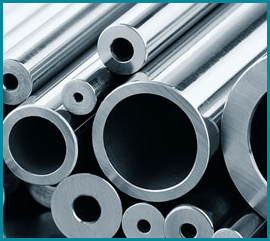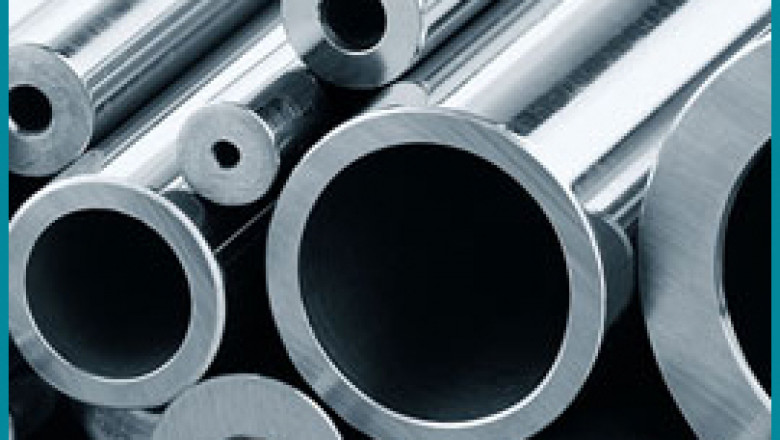views
Choosing the Right Stainless Steel Pipe: 304 vs 304L vs 304H
In the case of stainless steel pipes and tubes, choosing the proper grade is very important to provide performance, longevity, and value for money. Some of the most widely utilized stainless steel grades are 304, 304L, and 304H. Although all three belong to the 304 family, each type is customized to address specific operational requirements. Knowing their distinctions can assist engineers, contractors, and purchasers in making the best choices for their projects.
In this article, we demystify the main characteristics, commonalities, and differences between Stainless Steel 304, 304L, and 304H pipes and tubes.
Stainless Steel 304 is commonly known as the "workhorse" of the stainless steel universe. It's an austenitic (non-magnetic) stainless steel with high chromium content (18%) and nickel content (8%), which provides superior resistance to corrosion, formability, and strength.

Main Properties of SS 304:
High resistance to a broad spectrum of atmospheric environments and to numerous corrosive media.
Excellent resistance to corrosion by sea water in intermittent service up to 870°C and in continuous service up to 925°C.
Easy to fabricate and weld.
General Applications:
Equipment for food processing
Architectural buildings
Heat exchangers
Chemical tanks
What is Stainless Steel 304L
The "L" in 304L means "Low Carbon." This form of 304 stainless steel contains a maximum of 0.03% carbon, as opposed to 0.08% in standard 304. This reduced carbon content greatly enhances its resistance to intergranular corrosion following welding.
Major Properties of SS 304L:
Very good weldability without post-weld annealing.
Improved resistance to sensitization (grain boundary carbide precipitation).
Comparable corrosion resistance to 304 but with slightly lower strength because of lower carbon.
Typical Applications:
Welded pressure vessels
Chemical and pharmaceutical processing equipment
Piping systems that need frequent welding
Marine environments
What is Stainless Steel 304H?
Stainless Steel 304H is a high-carbon variant of 304, created for service in high temperatures. It contains 0.04% to 0.10% carbon, which makes it stronger in high temperatures but less corrosion resistant than 304 and 304L.
Key Characteristics of SS 304H:
Enhanced strength above temperatures of 500°C (932°F).
Good creep resistance.
Applicable in pressure vessel as well as boiler applications.
Popular Uses:
Heat exchangers
Boilers
Industrial furnaces
High-temperature chemical processes
Key Differences at Glance
Characteristic\t304\t304L\t304H
Carbon Content\t0.08% maximum\t0.03% maximum\t0.04–0.10%
Corrosion Resistance\tVery High\tVery High (following welding)\tSlightly Low
Strength (at High Temp)\tVery Good\tMedium\tSuperior
Weldability\tExcellent\tExcellent\tGood (follows post-weld heat treatment occasionally)
Uses\tGeneral application\tWelding-intensive use\tHigh temperature use
Choosing the Correct Grade?
While deciding between 304, 304L, and 304H, take note of the following considerations:
Welding Requirements: In case of severe welding, 304L is usually the better choice because it resists carbide precipitation.
High Temperature Exposure: When there is high temperature exposure continuously, 304H is the natural choice due to its strength and creep strength.
General Applications: For typical general applications in which neither excessive welding nor exposure to high temperature is involved, 304 has a great compromise between strength, corrosion resistance, and price.
Conclusion
Selecting the appropriate stainless steel pipe or tube — be it 304, 304L, or 304H — is pivotal to the success and longevity of your project. Although they all come from the same family, differences in composition render each grade special in terms of its strength. Always take into consideration the environmental conditions, temperature needs, and fabrication process involved before selecting one.
By knowing these differences, you can make your application efficient as well as cost-effective, yielding the maximum value and performance out of your investment.
















![[1 (888) 326-1024] How to Get in Touch with Expedia 24/7 Support Team: Phone, Email, and Chat Options](https://timessquarereporter.com/upload/media/posts/2025-06/01/1-888-326-1024-how-to-get-in-touch-with-expedia-24-7-support-team-phone-email-and-chat-options_1748757002-s.jpg)





Comments
0 comment